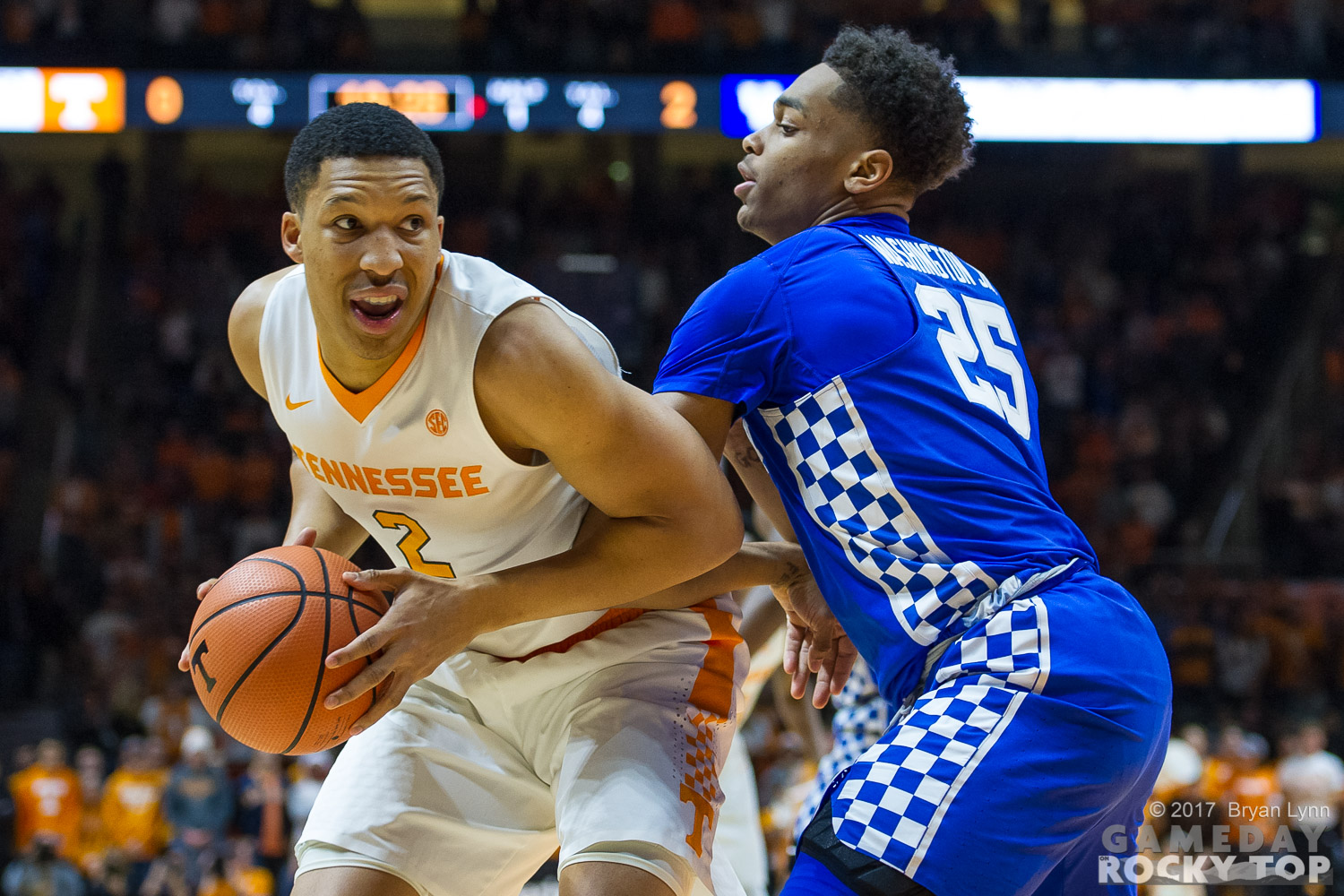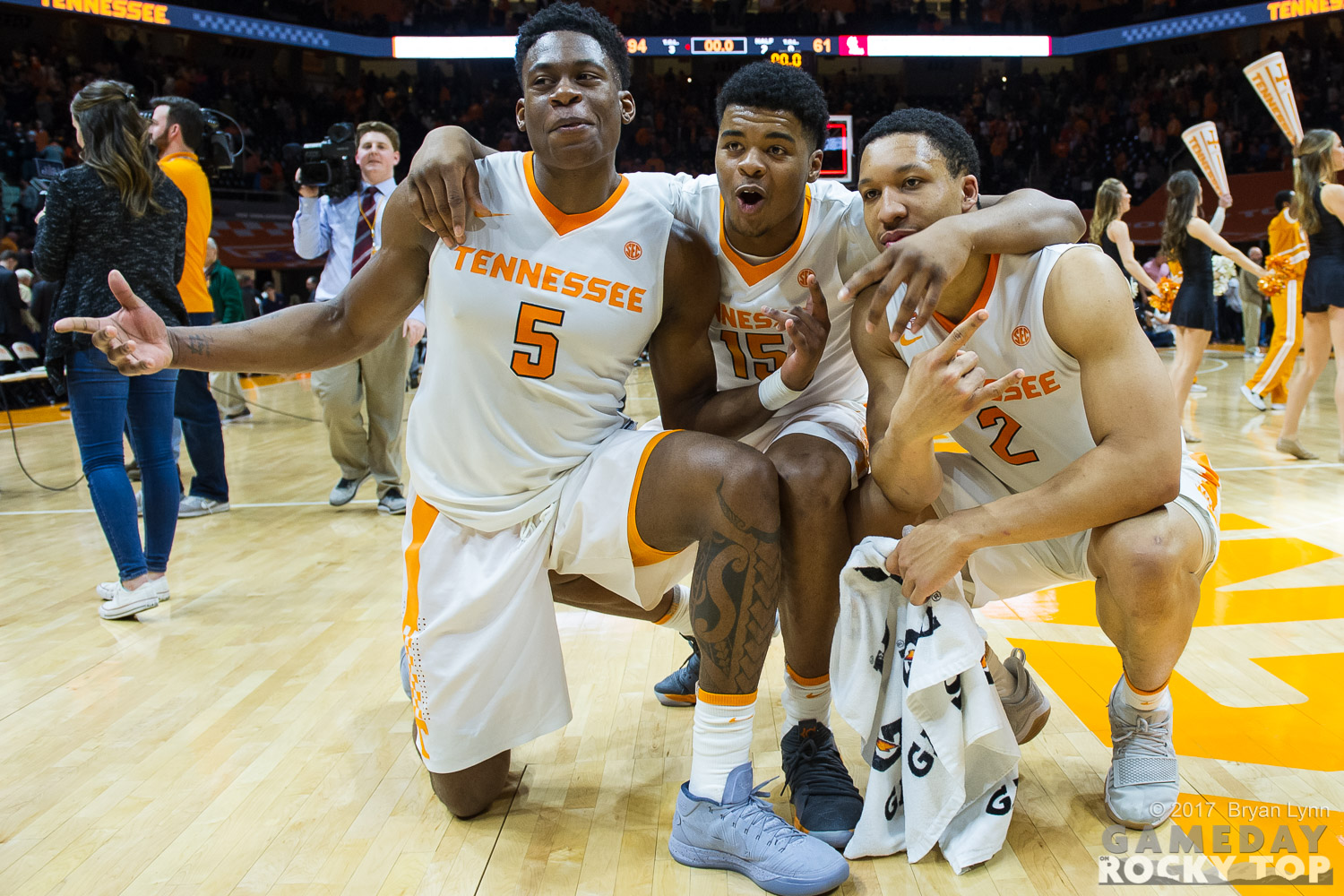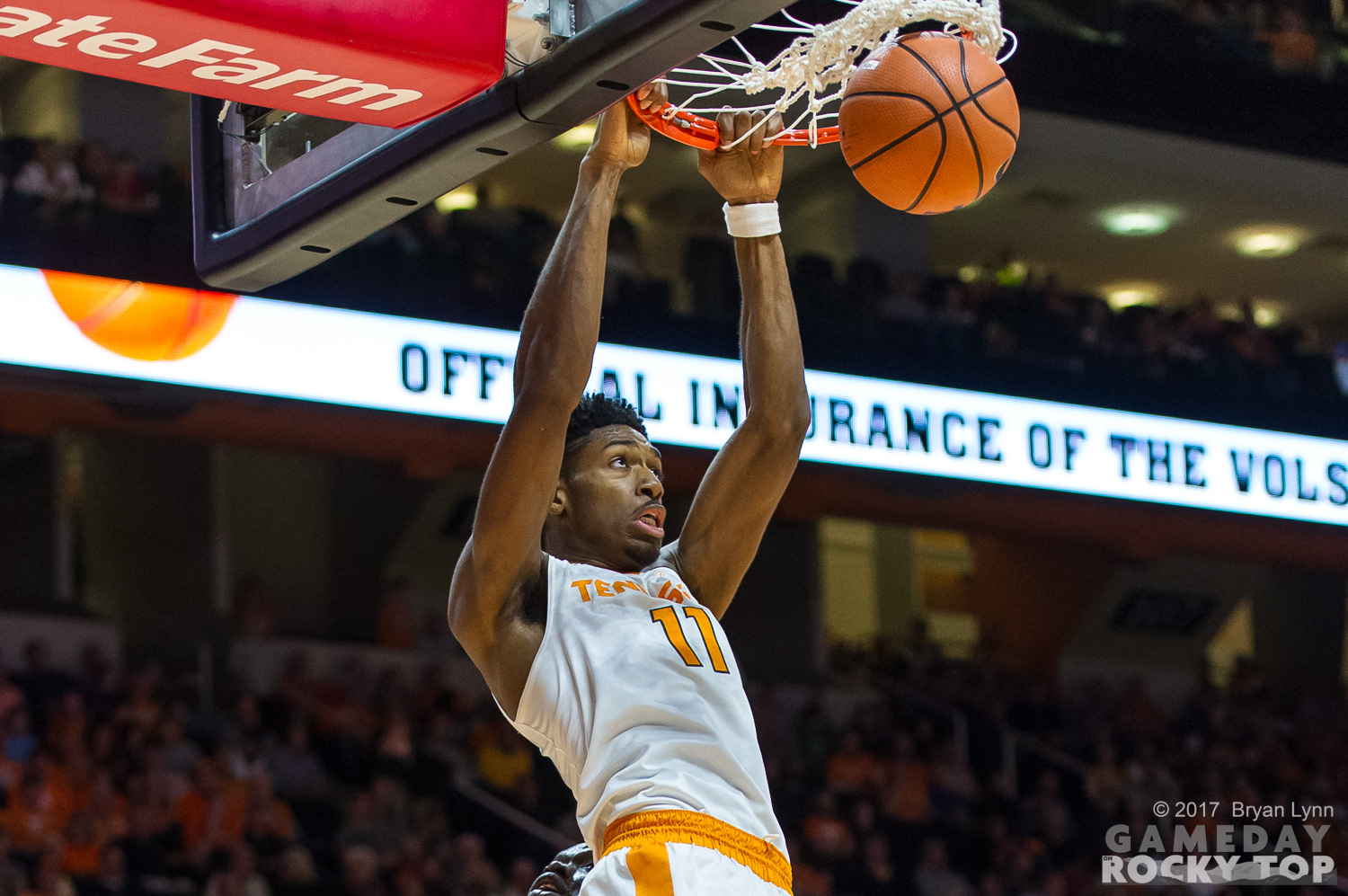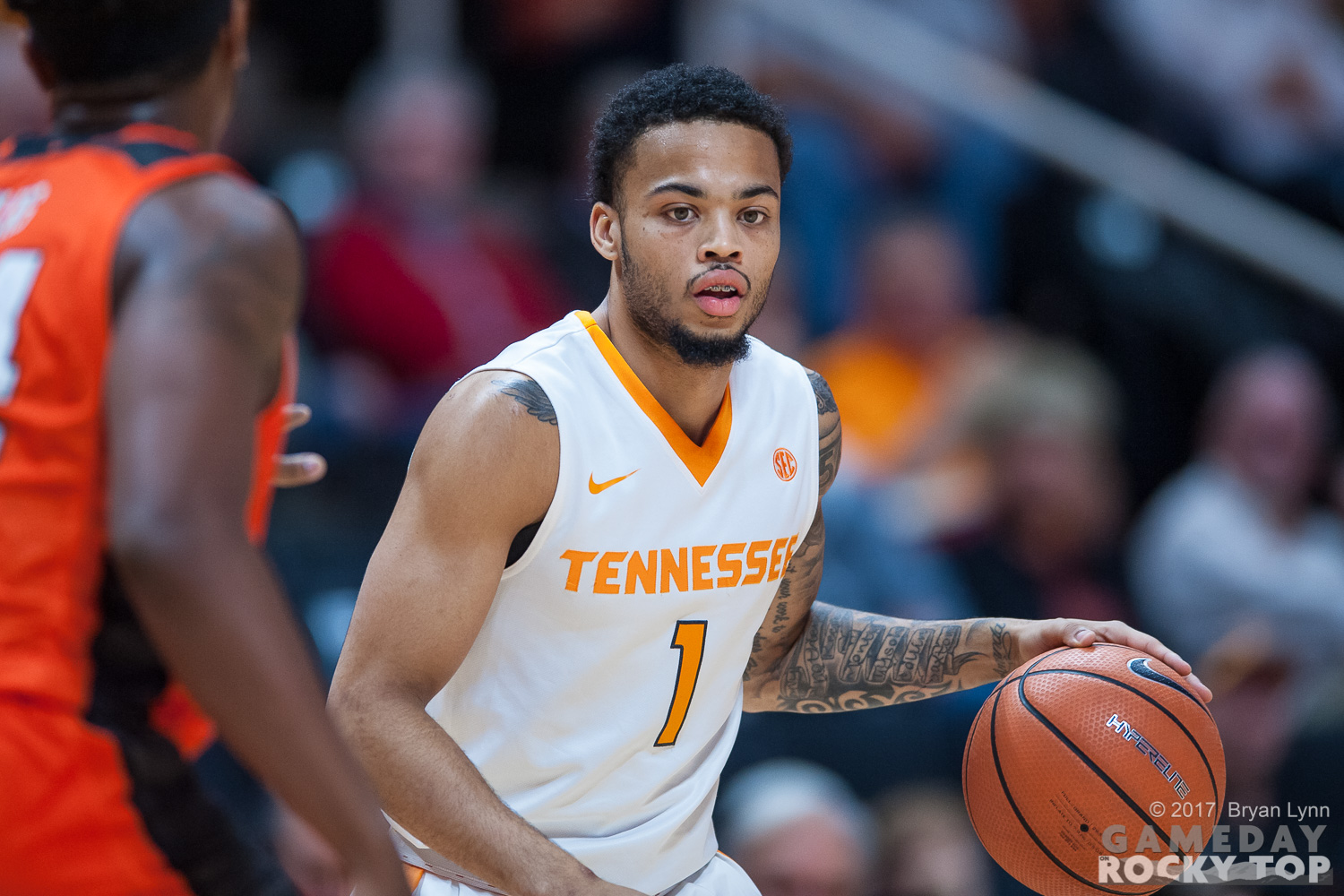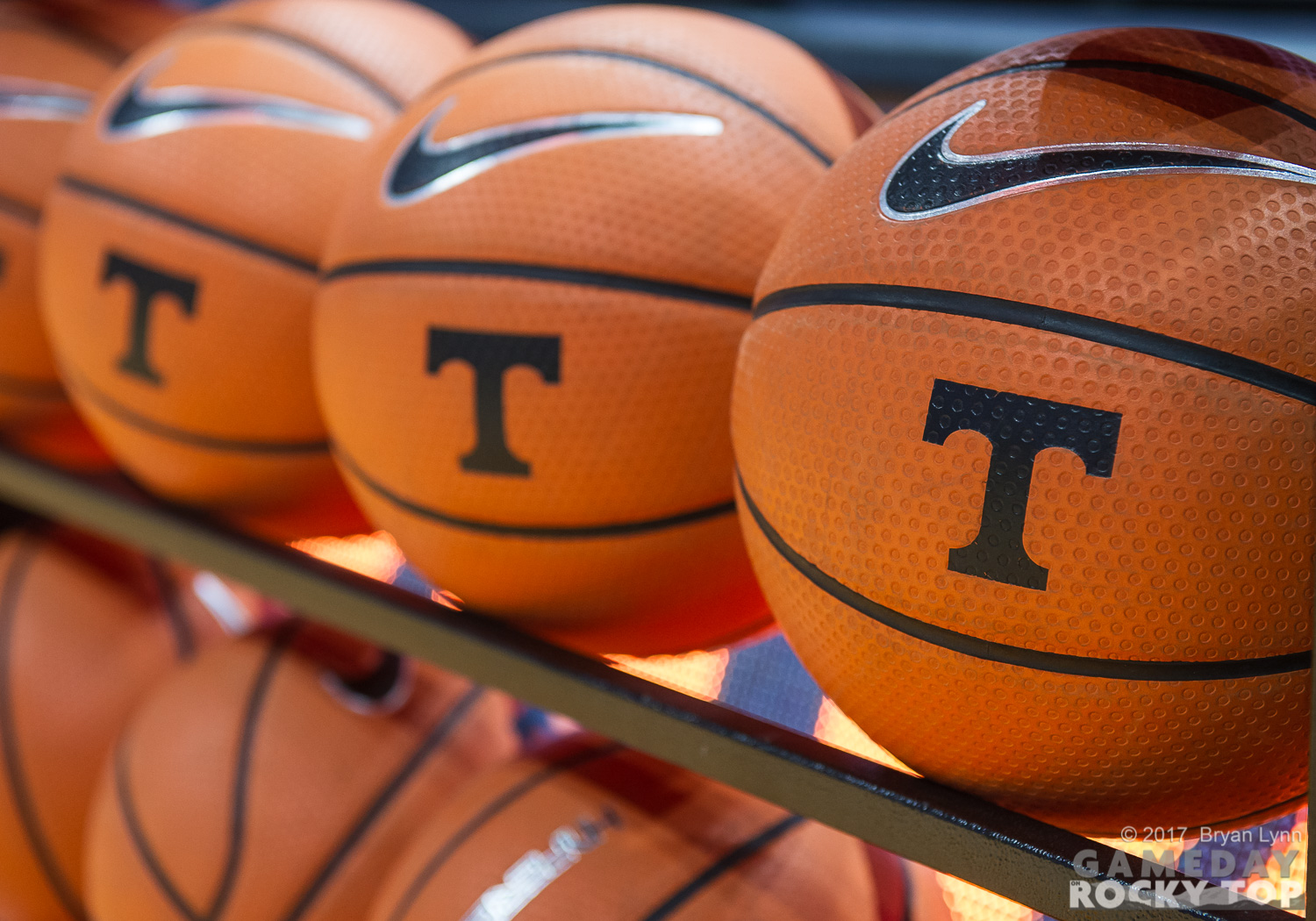You know the numbers by now: four wins in the 40-year history of Rupp Arena, none since 2006. Tonight an even bigger prize is on the table: Tennessee hasn’t swept Kentucky since 1999.
In the north, Calipari calls for aid:
We need you Tuesday to be at your best from the tip to the finish. If we’re going good, ride it and push us to make the lead unbearable. If we’re struggling some, encourage us and bring us back. The last eight minutes of the game, do not sit down! We need you more than ever now!
— John Calipari (@UKCoachCalipari) February 4, 2018
When the head coach of a program like Kentucky basketball (or Tennessee football) posts something like this, things aren’t going as well as they’d like. The Cats are 17-6 (6-4), hanging on at 24th in the AP poll. A three-game win streak was snapped at Missouri on Saturday; Florida beat them in Rupp three weeks ago.
Three keys for tonight’s opportunity:
- Who has the better game: Admiral Schofield or PJ Washington? In our first meeting, Washington had 13 points on 6-of-8 shooting, but played just 23 minutes with cramps. While Tennessee’s post players will have to do a better job defending Washington this time, Schofield plays the corresponding role on the other end of the floor. Rick Barnes loves to attack Kentucky with undersized bigs: Armani Moore had terrific games against the Cats, Schofield had 15 points off the bench in Tennessee’s win over #4 Kentucky last season, and followed up with 20 points and nine rebounds in Knoxville earlier this year. Grant Williams will get the attention, but Tennessee needs Schofield to take advantage to get this thing done.
- Kentucky’s three-point shooting. This season Kentucky is 16-1 when they shoot at least 30% from the arc, 1-5 when they don’t. If I was a Kentucky fan, I’d take comfort in this stat: 30% isn’t much to ask for, and when the Cats can splash just a few threes to go with their incredible talent, they’re really tough to beat. But the memories of John Calipari’s first team in Lexington – still the only one at UK to feature a pair of NBA All-Stars in John Wall and DeMarcus Cousins – would also make me a little uneasy. That team lost in Knoxville because it made only two three-pointers, then lost in the Elite Eight for basically the same reason. The good news for Tennessee: the Vols are the one in 16-1 this season, beating Kentucky despite the Cats hitting 7-of-19 (36.8%) from the arc.
- Kevin Knox is Kentucky’s leading scorer at 15.1 points per game. But he has struggled in Kentucky’s four SEC losses. The Vols held him to six points on 1-of-9 shooting. At South Carolina he had 21 points on 16 shots, but went 1-of-8 from the arc. Florida held him to nine, and Missouri held him to five last time out. Tennessee’s defense has been more vulnerable to elite guard play; they did really well against the 6’9″ Knox the first time around, but how will it go in Rupp?
You know you’re having an incredible year when losing in Rupp could be considered a disappointment. The history of this series in Lexington makes me feel like this is a nothing-to-lose date for Tennessee. But the narrative of Tennessee’s season suggests the opposite. The Vols have stared down better foes, but if Calipari gets his wish, not a more hostile environment. Can this Tennessee team pull off one of the program’s rarest feats?
7:00 PM ET on the big boy network for once, Dickie V and all, baby.
Let’s win.
